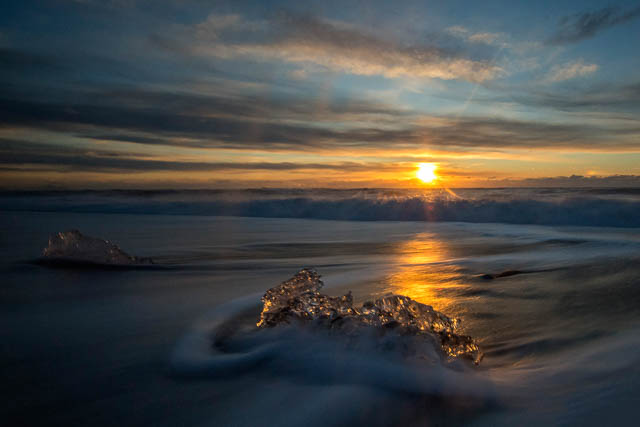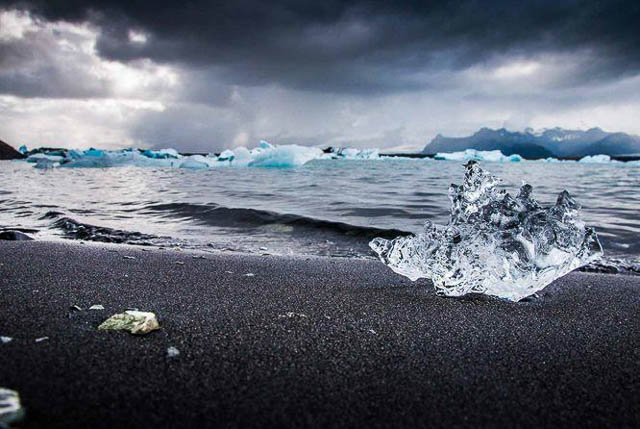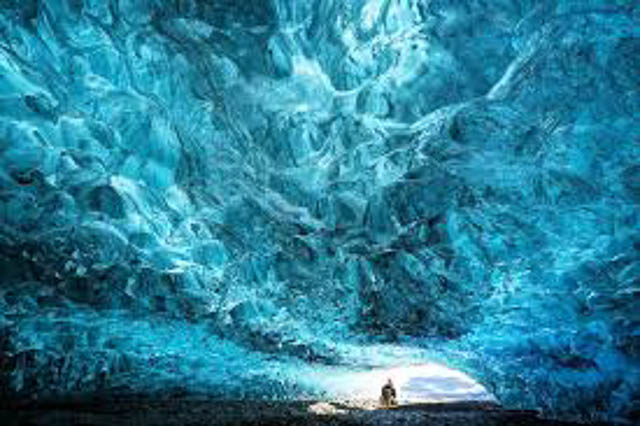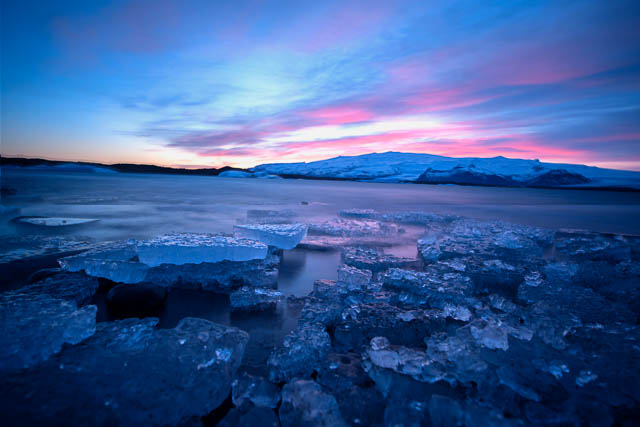About
Top Experiences
Type of Journey
Subscribe to newsletter and stay updated
Read about our travel expeditions, new destinations, new pictures, latest trip schedules
Iceland- the land of fire and ice, as it is popularly called by the wanderlusts is a country that is the perfect destination for adventure lovers and nature lovers alike. With its ring of active volcanoes, hot springs, glaciers, ice beaches, and of course, the breath-taking Northern lights, Iceland offers backpackers something unique, something mouth-watering.
Jokulsarlon glacier lagoon and Diamond beach Iceland, two of tourism highlights of this Nordic country are separated just by the breadth of a road.
In Iceland’s jewel box, one of the most precious gems is the Jokulsarlon glacier lagoon. It is located in the southern part of the Nordic country and is formed from a glacier melt. The Jokulsarlon glacier lagoon is one of the most visited and photographed places of Iceland, thanks to its large masses of glistening, naturally crafted icebergs, raising their head over the calm teal waters of one of Iceland’s deepest lakes.
Apart from the glacial lagoon, Jokulsarlon’s other major attraction to nature lovers is its black sand beaches littered with sleek, shiny ice crystals which help the beach get its name- Black diamond beach Iceland. The snow-white ice crystals lying on the black sand of the beach glow like diamonds and stun every visitor, first-time or otherwise. This ice beach in Iceland offers an excellent view of the Northern lights too.
OVERVIEW
Location: South East Iceland
Nearest Airport: Hornafjordur airport
How to reach: 1 hr drive from Hornafjordur airport
Famous for: Glacial lagoon and diamond ice laced black beach
Best time to visit: Jan to Dec
WHAT TO SEE
Photography Sessions at Jokulsarlon Lagoon
Boat Tours at Jokulsarlon Lake
Northern Lights Viewing at Ice beach
Wildlife viewing at Jokulsarlon
Ice Caving at Jokulsarlon
Photography at Diamond beach
Jokulsarlon lagoon:
History of Jokulsarlon: The Vatnajokull glacier, the largest ice cap in Europe, has changed shape as a result of shifting temperatures and other environmental factors, creating Jokulsarlon. During 870-930 AD, when the first settlers came to the island, Vatnajokull’s south-eastern edge was roughly twenty kilometers further north than its present location. Between 1600 and 1900, when local temperatures were at their lowest, the glacier grew. The Jokulsarlon glacial lagoon and icebergs were created as a result of the glacier retreating in the 1920s as temperatures started to rise once more.

Activities at Jokulsarlon:
The Jokulsarlon glacier lagoon is also an aquatic destination. Hence, you will also find a Jokulsarlon boat tour that will take you closer to the mammoth icebergs and Icelandic seals. You can also view the Northern lights from Jokulsarlon. More on that later in this blog.
Because of the thrilling ice-caving tours that take place nearby, Jokulsarlon holds a particular place in the hearts of adventure seekers. Simply described, ice caving is an activity in which you must navigate ice caverns and tunnels. The activity provides you with a singular and magnificent perspective of the glassy ice walls, which appear to be stunning works of modern art.
Photography at Jokulsarlon:
Jokulsarlon offers some of the most scenic views in Iceland, and hence it isn’t a surprise at all that shutterbugs spend hours and even days in Jokulsarlon, shooting the exhibition of the intermingling colors that nature puts on a show in this region.

Ice Beach
The black sand Ice beach in Iceland is a treasure trove of natural creations in the form of icebergs of varying shapes, forms, and colors. Just when you think you have seen it all, diamond beach comes up with something that leaves you spellbound.
Why are some of the ice crystals on the beach blue?
On the diamond beach, you will find ice crystals as small as your finger or icebergs as big as a truck. Besides, the icebergs also vary in color. Some are azure blue, while others may be black or simply white. The blue color of an iceberg signifies age and lack of air pockets, while the black is due to volcanic dust or the reflection of the black sand.

Why is the sand black in color?
The black sand that characterizes Black diamond beach Iceland often leaves visitors curious. The sand owes its colors to its volcanic origin. Due to the region’s volcanic landscape, basalt lava gives rise to the black sand of the beach.
What to do on diamond beach?
Guests visiting the diamond beach spend hours immersing in the scenic beauty of the place and filling their camera reels with the same. A walk along the black sand beach, viewing the icebergs around you and the calm ocean, is as refreshing and heart-warming as it gets. You can also see Icelandic seal and orca whales that can be viewed in this region. Viewing the Northern lights during the winter months and the midnight sun are also some of the most popular activities on the beach.

Northern lights viewing
The Northern Lights are perhaps Iceland’s most iconic attraction to tourists. The dazzling array of lights in the sky is a phenomenon that is beyond beautiful and beyond description. But the Northern lights are not seen from everywhere in Iceland.
The Diamond Beach at Jokulsarlon, however, provides excellent views of the Northern lights during the winter months. In Jokulsarlon, you will also find boat tours that will take you to the middle of the lake to view this wonderful phenomenon from a unique vantage point. In the winter months, tourists flock to Jokulsarlon to experience and photograph the Northern lights.
